You are here
Filmography
Featuring well-known L.A. Rebellion works alongside rarely seen student films, this body of work represents not only the originality of the individuals whose names are on them, but a collective vision as well. Across the two decades during which they made their presence felt at UCLA, and in the decades since, individual L.A. Rebellion artists have focused on diverse topics and responded to evolving political and artistic thought through their work. Explorations of class, considerations of historical legacies, stories attentive to concerns of local communities and appreciations of other Black arts are only some of the areas of exploration. The films also display a diversity of forms, from irreverent reconfigurations of well-worn genre types, to groundbreaking experiments with cinematic language. Certain works, long out of circulation, represent rediscoveries and will certainly lead to much future scholarship.
Learn more about the UCLA Film & Television Archive’s ongoing “L.A. Rebellion” inititiative.
| Title | Year | |
|---|---|---|
 |
Nightjohn A literate slave teaches a young girl the power of words on a plantation in the 1830s South. Directed by Charles Burnett.
|
1996 |
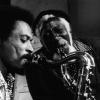 |
Passing Through Eddie Womack, an African-American jazz musician, is released from prison for the killing of a white gangster. Not willing to play for the mobsters who control the music industry, Womack searches for his musical mentor, Poppy Harris. Larry Clark's film repeatedly turns to various musicians improvising jazz, leading a French critic to call it “the only jazz film in the history of cinema.” |
1977 |
 |
Penitentiary Framed for the murder of a white biker, Martel “Too Sweet” Gordone learns to box his way to freedom in prison. Jamaa Fanaka's Penitentiary allegorizes African-American life, seeing the prison system as an arena of violent struggle against forces both external and internal that plays out on the bodies of the inmates. |
1979 |
 |
Penitentiary 2 Jamaa Fanaka continues the boxing saga of “Too Sweet” Gordone. Paroled after serving time for a murder he didn’t commit, prison boxing champ Too Sweet hangs up his gloves, moves in with his sister’s family, and rekindles his romance with Clarisse. He soon learns that life of the outside isn’t much easier than it was in prison, when “Half Dead” Johnson escapes from prison and murders Clarisse. Though the loss of Clarisse is almost too much to bear, Too Sweet, with the help of his new trainer (Mr. T), returns to the fight game and begins his rise to the top. |
1982 |
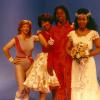 |
A Period Piece In a comic rap, Zeinabu irene Davis lampoons the false promises in ads for feminine hygiene products. |
1991 |
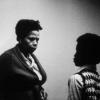 |
The Pocketbook In the course of a botched purse-snatching, a boy comes to question the path of his life. Billy Woodberry’s second film, and first completed in 16mm, adapts Langston Hughes’ short story, “Thank You, Ma’am,” and features music by Leadbelly, Thelonious Monk and Miles Davis. |
1980 |
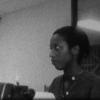 |
Rain (Nyesha) The political awakening of a female typist is vividly portrayed through Melvonna Ballenger’s use of John Coltrane’s song, “After the Rain.” |
1978 |
 |
Rich On the day of his high school graduation, an African American youth battles for self-determination as a convergence of forces attempt to shuttle him toward a future of lowered expectations in S. Torriano Berry's gritty, yet tender, character study. |
1982 |
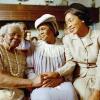 |
The Rosa Parks Story Based on the true events of the “first lady of the civil rights movement,” Julie Dash’s "The Rosa Parks Story" chronicles the history of Parks’ famous act of civil disobedience. Focusing on both the moment that sparked the Montgomery bus boycott and Parks’ personal life, the film is an uplifting tale of courageousness and humanity in the face of bigotry and injustice. |
2002 |
 |
Sankofa Haile Gerima’s American masterpiece has had a transformative impact on audiences. The film follows Mona, an African American model on a fashion shoot in Ghana who undergoes a journey back in time and place to a slave plantation in North America where she becomes Shola, a house slave. Through this process, Mona recovers her lost slave identity and confronts her ancestral experience. |
1993 |
Pages
To report problems, broken links, or comment on the website, please contact support
Copyright © 2025 UCLA Film & Television Archive. All Rights Reserved






 Mobile Navigation
Mobile Navigation

